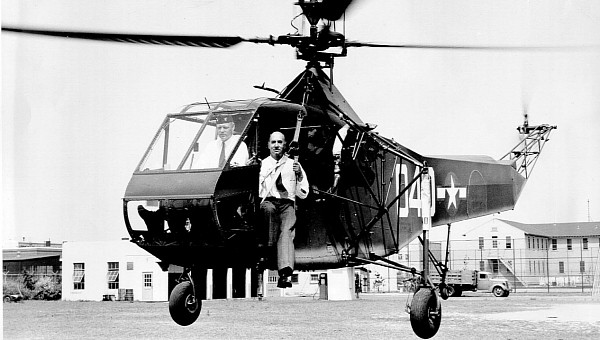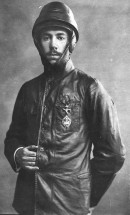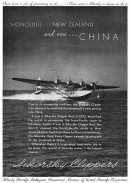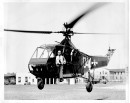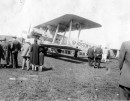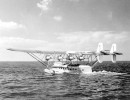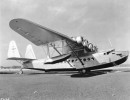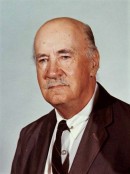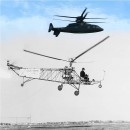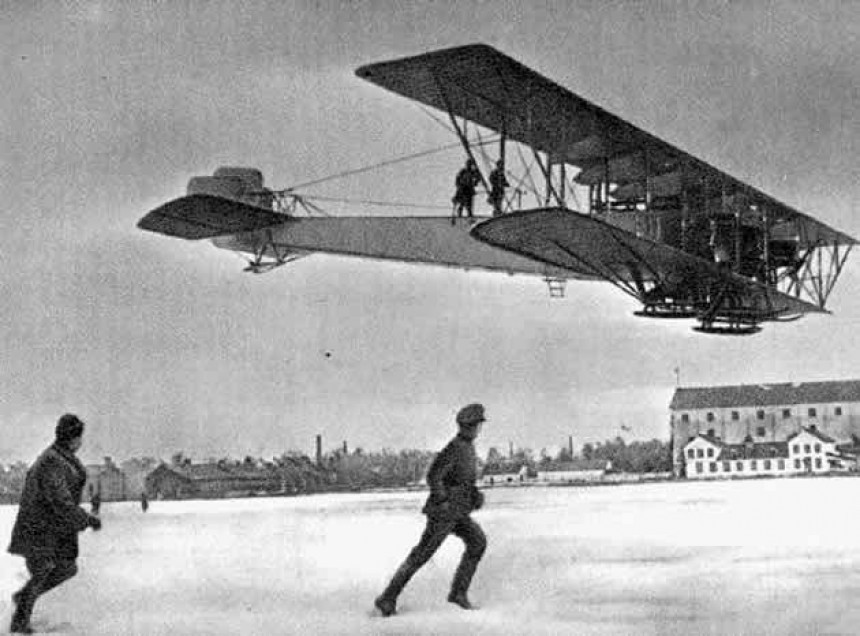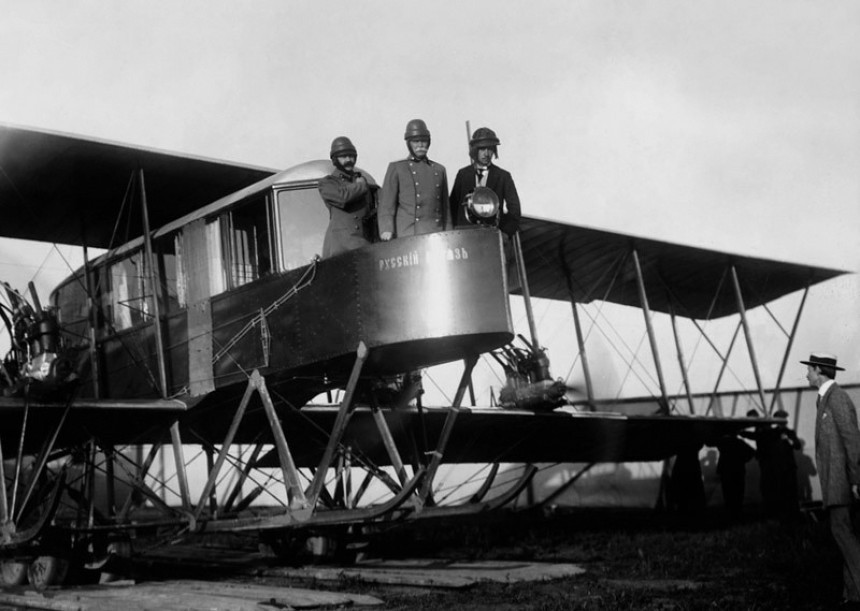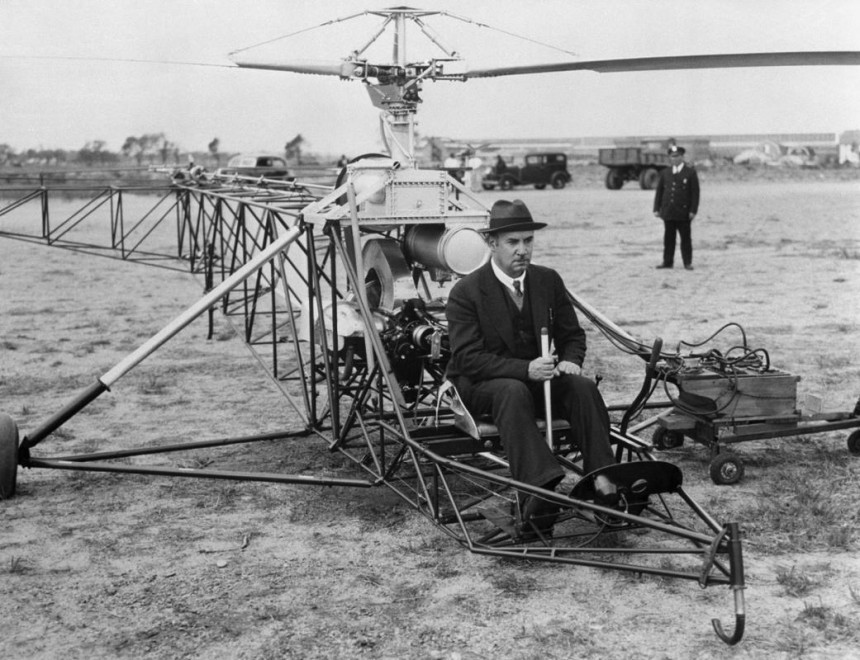People tend to forget that Sikorsky Aircraft used to build something other than helicopters in its early days. As one of the earliest American aerospace manufacturers still in operation, it takes brains, guts, and a profound mastery of aeronautical know-how to make it this far. One hundred years worth, in fact.
Every great aerospace manufacturer of the last 120 years has seen a leading man or woman whose brilliance catapulted their designs past other companies most have never heard of. Sikorsky Aircraft was no exception. In fact, Igor Sikorsky wasn't the only transplant from Eastern Europe to make it big in American aviation during the pioneer days. In the centennial year of Sikorsky's founding, let's take a deep dive into the man most vital to making helicopters a part of our reality.
Igor Sikorsky was born in the Russian Empire on May 25th, 1889, in the modern Ukrainian City of Kyiv. His parents were Ivan Alexeevich Sikorsky, a Psychology professor, and Maria Stefanova Sikorsky, a part-time, stay-at-home mother who was also a physician. With that in mind, the young Sikorsky was surrounded by free thinkers and intellectuals from day one.
No wonder one of the first pieces of technology to inspire the young Sikorsky was a rough blueprint by Leonardo da Vinci for a device known as an aerial screw given to him by his mother. It was a device most modern folks would identify as a helicopter. In the business, we call this foreshadowing. It's also thought that the works of Jules Verne and all the marvelous, fictional machines therein were instrumental to the young Sikorsky's upbringing.
In any case, it wouldn't be until 1908, on a trip to Germany with his father, that Sikorsky heard about pivotal figures like Ferdinand von Zeppelin and the Wright Brothers. At that point, Sikorsky knew his dreams of flight, as he read about in works of fiction, were now a real possibility. A miniature model rotorcraft powered by wound-up rubber bands made at age 12 was just the start of something world-changing.
Formal schooling in the Imperial Russian Maritime Cadet Corps as a teenager further pushed Sikorsky along the path to engineering. But a wealth of aeronautical engineers was something Imperial Russia couldn't lay claim to in the early 1900s. In the pioneer days of aviation, there were only two places in the western world that acted as its cradle.
One of these was the Hempstead Plains of Long Island, New York, USA, and the other was the fields and grasslands on the outskirts of the French capital of Paris. Both Paris and Long Island would become precious places for Igor Sikorsky. But it was Paris, with its frequent air shows and breadth of aeronautical talent, which captured his heart first.
Further schooling at the Mechanical College of the Kyiv Polytechnic Institute sharpened Sikorsky's skills in engineering. Before long, he was designing his own rough sketches of powered, heavier-than-air rotorcraft, somewhat resembling something out of a Verne novel itself. Though mundane to the average person, these sketches culminated in something groundbreaking.
It was after another trip to Paris when Sikorsky built his first helicopter prototype. The craft sported a 25-horsepower engine at first. But the first prototype couldn't get off the ground. That didn't stop subsequent attempts from achieving flight. In real-time, before his very eyes, Igor Sikorsky was unraveling the bare basics of how rotorcraft would one day operate.
Key components like power-to-weight ratios and total lift generated by the rotors had no means of testing other than trial and error in those days. In a sense, Sikorsky was doing aviation a colossal favor by working these bugs out himself. Over time, Sikorsky was able to source more of the Ansani gasoline engines, which powered his first prototypes from Paris. With a stockpile of engines now on hand, Sikorsky was free to perform more experiments.
By 1910, key issues like power-to-weight ratios and better control surfaces were worked out with his second prototype. One which did indeed lift off the ground. With twin sets of contra-rotating canvas propellers, it was like a biplane that could also hover for up to 12 seconds. Not all that impressive today. But then again, neither was the first flight of the Wright Flyer.
No sooner was Sikorsky's genius in rotorcraft taking shape than his second calling to design aircraft was also fleshed out. As it turned out, Sikorsky was just as adept at fixed-wing aircraft design. But after one of his early prototypes emergency landed following engine failure, Sikorsky was convinced the solution was, of course, more engines. Instead of two, why not four? He must have thought.
This was the impetus behind the Sikorsky Russky Vityaz, the world's very first quad-engined airplane. Taking to the sky on May 10th, 1913, every Boeing 747 and Airbus A380 can trace their lineage back to this one airplane. Built by the Russian Baltic Railroad Car Works with Sikorsky's design, the single Russky Vityaz spawned airliner/heavy bomber named after a piece of old Ukrainian mythology, the Ilya Muromets.
During the early 1910's Sikorsky busied himself designing single, twin, and quad-engine airplanes for the Russian military and civilian sectors. His biplanes were some of the very first to be carried aboard bespoke Navy seaplane tender ships. A few even carried paying passengers. In another universe, Igor Sikorsky would have likely become the cornerstone of the Russian aerospace sector. But instead, Sikorsky found himself caught up in a little thing called the Russian Revolution.
This took place supposedly after Sikorsky was threatened and menaced by the Bolsheviks due to his popularity in the area and supposed friendship with the Tsar. Tsar Nicholas II had indeed bestowed more than a few awards and merits for his contribution to the pioneer age of Russian aviation. But it's doubtful Sikorsky was more than on simple, friendly terms with his native monarch.
Whether the accusations were true or not, Sikorsky realized that his time living in Eastern Europe had come to an end. He fled his collapsing homeland, arriving in New York City in March 1919. After taking a few years to settle in, Sikorsky was made familiar with the world's second great nexus of aviation in the pioneer days, Long Island, New York's Hempstead plains.
In the same area where Charles Lindbergh crossed the Atlantic that was home to famous warplane makers like Curtiss, Grumman, and Republic, Igor Sikorsky fit his surroundings like a glove. On March 5th, 1923, Igor Sikorsky founded Sikorsky Aircraft, basing his company initially very close to Roosevelt Field, the same airstrip on the Hempstead Plains used by the Spirit of St. Louis.
Among other aviators fleeing the chaos in Eastern Europe was a Georgian national by the name of Alexander de Seversky. The man who'd join a Long Island local from the Town of Huntington, Leroy Grumman, to form Republic Aviation and Grumman Aircraft, respectively. When joined for a time by Glenn H Curtsiss's Curtiss Aircraft Company, the Hempstead Plains hosted the largest collection of aviation know-how anywhere in the world at the time.
But Sikorsky would not be just another face in the crowd. Using the basic design from the Illya Muromets, Sikorsky designed the S-29, his first American biplane airliner. As one of the first airliners to employ an airliner stair as is common today, a trend of innovation that started in Tsarist Russia blossomed on Long Island.
By 1929, Sikorsky had moved his factory from New York to a small town across the Long Island Sound called Stratford, Connecticut. It was to be the home of Sikorsky's company for the next nine decades. Through deals with lucrative airlines like Pan Am, Sikorsky found a profitable enterprise supplying them with flying boat passenger planes.
Through these business deals, the Sikorsky S-40 and S-42 Clipper ensured the company was in it for the long haul in the aviation space. Further contracts were to be found with the U.S. Military, which operated Sikorsky JRS-1s in their Navy during the Attack on Pearl Harbor. By then, Sikorsky was a man in his early-to-mid 50s. But that didn't mean he didn't still have one trick left up his sleeve; his magnum opus.
Sikorsky employed the help of the Chance Vought Corporation to construct his first attempt at a helicopter on western soil. Chance Vought operated under the same holding corporation as Sikorsky, that being United Aircraft and Transport Corporation. Together, the two companies created the VS-300 amphibious helicopter, the world's first such design.
The VS-300 first flew on September 14th, 1939, but its most lasting legacy came in the form of what it developed afterward. Thirty years after Sikorsky built his first flightless rotorcraft prototype, the R4, or the Hoverfly, as it was known in British service, became the world's first mass-produced helicopter. With 131 built between 1942 and 1944, the R4's innovative anti-torque tail rotor is a trademark feature of almost all modern helicopters.
Sikorsky retired soon after the R4s production ceased. The type served valiantly during the Second World War, assisting the Allies in both the European and Pacific theaters as search and rescue vehicles. Sikorsky's company grew to become one of the U.S. Military's go-to domestic helicopter manufacturers under the ownership of Lockheed Martin alongside Bell Helicopter.
He died on October 26th, 1972, at his home in the town of Easton, Connecticut. If not for him, the skies of the world might have looked very different indeed. On this day, so close to 100 years to the day of his company's founding, we'd like to extend the man our greatest thanks.
Check back for more aviator profiles right here on autoevolution.
Igor Sikorsky was born in the Russian Empire on May 25th, 1889, in the modern Ukrainian City of Kyiv. His parents were Ivan Alexeevich Sikorsky, a Psychology professor, and Maria Stefanova Sikorsky, a part-time, stay-at-home mother who was also a physician. With that in mind, the young Sikorsky was surrounded by free thinkers and intellectuals from day one.
No wonder one of the first pieces of technology to inspire the young Sikorsky was a rough blueprint by Leonardo da Vinci for a device known as an aerial screw given to him by his mother. It was a device most modern folks would identify as a helicopter. In the business, we call this foreshadowing. It's also thought that the works of Jules Verne and all the marvelous, fictional machines therein were instrumental to the young Sikorsky's upbringing.
In any case, it wouldn't be until 1908, on a trip to Germany with his father, that Sikorsky heard about pivotal figures like Ferdinand von Zeppelin and the Wright Brothers. At that point, Sikorsky knew his dreams of flight, as he read about in works of fiction, were now a real possibility. A miniature model rotorcraft powered by wound-up rubber bands made at age 12 was just the start of something world-changing.
One of these was the Hempstead Plains of Long Island, New York, USA, and the other was the fields and grasslands on the outskirts of the French capital of Paris. Both Paris and Long Island would become precious places for Igor Sikorsky. But it was Paris, with its frequent air shows and breadth of aeronautical talent, which captured his heart first.
Further schooling at the Mechanical College of the Kyiv Polytechnic Institute sharpened Sikorsky's skills in engineering. Before long, he was designing his own rough sketches of powered, heavier-than-air rotorcraft, somewhat resembling something out of a Verne novel itself. Though mundane to the average person, these sketches culminated in something groundbreaking.
It was after another trip to Paris when Sikorsky built his first helicopter prototype. The craft sported a 25-horsepower engine at first. But the first prototype couldn't get off the ground. That didn't stop subsequent attempts from achieving flight. In real-time, before his very eyes, Igor Sikorsky was unraveling the bare basics of how rotorcraft would one day operate.
By 1910, key issues like power-to-weight ratios and better control surfaces were worked out with his second prototype. One which did indeed lift off the ground. With twin sets of contra-rotating canvas propellers, it was like a biplane that could also hover for up to 12 seconds. Not all that impressive today. But then again, neither was the first flight of the Wright Flyer.
No sooner was Sikorsky's genius in rotorcraft taking shape than his second calling to design aircraft was also fleshed out. As it turned out, Sikorsky was just as adept at fixed-wing aircraft design. But after one of his early prototypes emergency landed following engine failure, Sikorsky was convinced the solution was, of course, more engines. Instead of two, why not four? He must have thought.
This was the impetus behind the Sikorsky Russky Vityaz, the world's very first quad-engined airplane. Taking to the sky on May 10th, 1913, every Boeing 747 and Airbus A380 can trace their lineage back to this one airplane. Built by the Russian Baltic Railroad Car Works with Sikorsky's design, the single Russky Vityaz spawned airliner/heavy bomber named after a piece of old Ukrainian mythology, the Ilya Muromets.
This took place supposedly after Sikorsky was threatened and menaced by the Bolsheviks due to his popularity in the area and supposed friendship with the Tsar. Tsar Nicholas II had indeed bestowed more than a few awards and merits for his contribution to the pioneer age of Russian aviation. But it's doubtful Sikorsky was more than on simple, friendly terms with his native monarch.
Whether the accusations were true or not, Sikorsky realized that his time living in Eastern Europe had come to an end. He fled his collapsing homeland, arriving in New York City in March 1919. After taking a few years to settle in, Sikorsky was made familiar with the world's second great nexus of aviation in the pioneer days, Long Island, New York's Hempstead plains.
In the same area where Charles Lindbergh crossed the Atlantic that was home to famous warplane makers like Curtiss, Grumman, and Republic, Igor Sikorsky fit his surroundings like a glove. On March 5th, 1923, Igor Sikorsky founded Sikorsky Aircraft, basing his company initially very close to Roosevelt Field, the same airstrip on the Hempstead Plains used by the Spirit of St. Louis.
But Sikorsky would not be just another face in the crowd. Using the basic design from the Illya Muromets, Sikorsky designed the S-29, his first American biplane airliner. As one of the first airliners to employ an airliner stair as is common today, a trend of innovation that started in Tsarist Russia blossomed on Long Island.
By 1929, Sikorsky had moved his factory from New York to a small town across the Long Island Sound called Stratford, Connecticut. It was to be the home of Sikorsky's company for the next nine decades. Through deals with lucrative airlines like Pan Am, Sikorsky found a profitable enterprise supplying them with flying boat passenger planes.
Through these business deals, the Sikorsky S-40 and S-42 Clipper ensured the company was in it for the long haul in the aviation space. Further contracts were to be found with the U.S. Military, which operated Sikorsky JRS-1s in their Navy during the Attack on Pearl Harbor. By then, Sikorsky was a man in his early-to-mid 50s. But that didn't mean he didn't still have one trick left up his sleeve; his magnum opus.
The VS-300 first flew on September 14th, 1939, but its most lasting legacy came in the form of what it developed afterward. Thirty years after Sikorsky built his first flightless rotorcraft prototype, the R4, or the Hoverfly, as it was known in British service, became the world's first mass-produced helicopter. With 131 built between 1942 and 1944, the R4's innovative anti-torque tail rotor is a trademark feature of almost all modern helicopters.
Sikorsky retired soon after the R4s production ceased. The type served valiantly during the Second World War, assisting the Allies in both the European and Pacific theaters as search and rescue vehicles. Sikorsky's company grew to become one of the U.S. Military's go-to domestic helicopter manufacturers under the ownership of Lockheed Martin alongside Bell Helicopter.
He died on October 26th, 1972, at his home in the town of Easton, Connecticut. If not for him, the skies of the world might have looked very different indeed. On this day, so close to 100 years to the day of his company's founding, we'd like to extend the man our greatest thanks.
